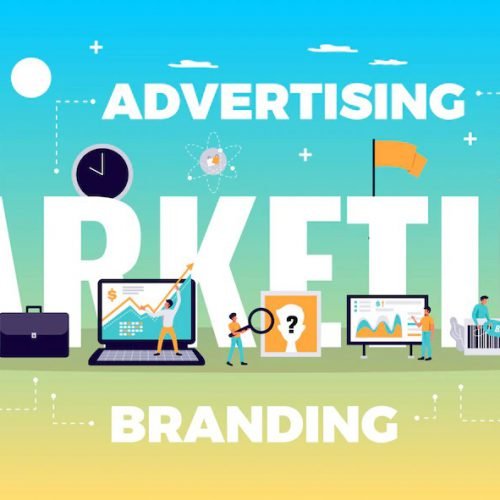Lead in Marketing helps businesses have more potential customers, thereby increasing conversion rates and sales revenue. What is Lead in Marketing as well as how to increase the number of leads in Marketing in the article below.

What is Lead in Marketing?
Lead in Marketing is a potential customer who is interested and needs to use the product/service that the business provides. Lead in Marketing can be someone who signs up to try a product, sign up for consultation or sign up to receive news and new articles from the business.
In general, a customer is considered a lead when they leave personal information such as name, email or phone number so the business can proactively contact them. These customers are interested in the business’s products/services. However, increasing the conversion rate and turning leads into real customers – people who pay for the products / services that businesses provide will depend on the quality of the lead as well as the ability to research and screen. corporate filter.
Measuring the number of leads (number of potential customers) is also an important Marketing KPI for a business’s Marketing staff. The number of leads can be measured daily, weekly, monthly or quarterly.
Attracting potential customers and increasing the number of leads for many businesses can be relatively simple, but ensuring these are people who have needs, desires and can afford to pay to increase conversion rates. Changing leads into qualified leads is not easy.
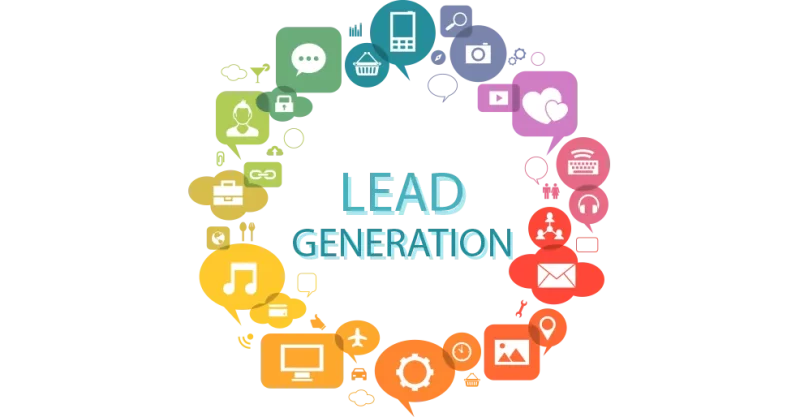
The 3 most important types of leads in Marketing
What are the 3 important types of leads in Marketing?
Basically, when classifying leads in Marketing, the 3 most important types of leads that businesses need to focus on include:
Information qualified lead (IQL)
According to each stage of the Marketing funnel , Information Qualified Leads are customers in the first stage (awareness stage) of the Marketing funnel.
During this stage, the business’s target customers will realize they have a problem that needs to be solved or a need that needs to be met.
However, customers are still having difficulty finding solutions to their problems. They will have a lot of questions about the problem they are facing and hope someone will provide them with truly useful information to answer these questions.
In the awareness stage, customers are actually looking for information that can help them solve a problem. Therefore, businesses should provide or make efforts to find useful information about issues related to products and services that their target customers are wondering about, and in return, collect a lot of personal information. their name, email address, location, etc.
People who register their personal information to receive business news and articles will be considered Information Qualified Lead. This type of customer is also called “cold lead”.
Marketing qualified lead (MQL)
Marketing qualified leads (MQL) – a group of potential customers who actually have a need to buy the product and are assessed by the Marketing department as qualified to be transferred to the sales department for the next stage of the customer journey .
Leads considered Marketing qualified leads can take actions such as:
- Download content such as reports or templates
- Attend a seminar or an online event that the business organizes
- Fill out the contact form or request detailed product information
- Sign up for a trial
- Sign up for consultation
This type of lead is also known as a “warm lead”.
Sales qualified lead (SQL)
Sales qualified leads (SQL) is a group of potential customers that the sales department considers to be truly potential customers. They will focus on reaching out to convert these audiences into real customers.
After obtaining MQLs obtained through Marketing channels, information about these objects will be transferred to the sales department. The sales department will now take on the responsibility of taking care of and monitoring to ensure that these leads meet the conditions to proceed to the purchase action stage in the sales funnel of the business . .
These are also called “hot leads” – qualified leads in marketing. And also the stage that brings the highest conversion rate.
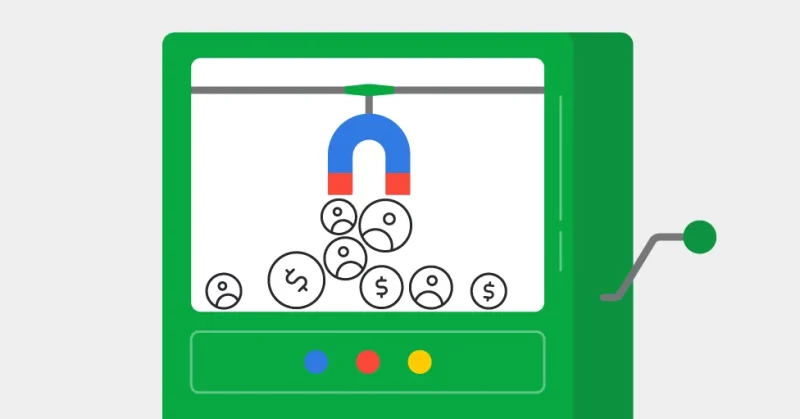
Distinguish between Marketing qualified lead and Sales qualified lead in Marketing
How to distinguish between Marketing qualified lead and Sales qualified lead? What is the difference between Marketing qualified lead and Sales qualified lead in Marketing?
Basically, businesses can distinguish between Marketing qualified lead and Sales qualified lead as follows:
| Marketing qualified lead | Sales qualified lead | |
| Concept | Marketing qualified leads (MQL) – a group of potential customers who actually have a need to buy the product and are considered qualified by the Marketing department to be transferred to the sales department for the next stage of the customer journey. | Sales qualified leads (SQL) is a group of potential customers that the sales department considers to be truly potential customers. These subjects are willing to pay to use the business’s products/services. |
| Act | Sign up for consultation, sign up to try the product, sign up to receive an ebook about the product,… | Make an appointment to meet with the sales staff, attend a product demo session… |
| For example | Sign up to receive an ebook about CRM software as well as how to implement CRM in your business. | Agree to meet with a sales staff to experience and demo the product. |
Why is lead marketing important for businesses?
Do businesses need to focus on attracting and owning many potential customers? What is the role and benefits of leads in Marketing?
Lead in marketing helps businesses know what stage potential customers are in the Marketing funnel
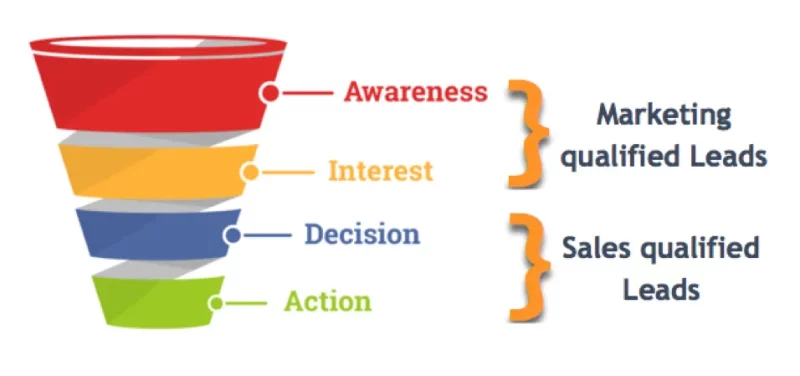
Marketing Funnel is the stages that customers need to go through to be able to go from potential customers to official customers of the business. The marketing funnel is closely related to the stages of the customer journey.
Basically, target customers need to go through 5 main stages of the current marketing funnel.
Stage 1: Awareness (Awareness Stage)
During this stage, the business’s target customers will realize they have a problem that needs to be solved or a need that needs to be met.
However, customers are still having difficulty finding solutions to their problems. They will have a lot of questions about the problem they are facing and hope someone will provide them with truly useful information to answer these questions.
Stage 2: Consideration (Consideration Stage)
At this stage, potential customers really understand their problem and know what solution they need. However, potential customers at this stage still need time to learn more about the solution the business provides and wonder whether that solution really suits their needs or not.
In the consideration stage, customers will look at a business’s products, along with those of other competitors, and begin to learn about the features and benefits of different products, thereby considering them. Consider carefully to make a purchasing decision.
Stage 3: Making a decision (Decision Stage)
This is the stage of the marketing funnel where customers are willing to pay to buy the product. They may be considering choosing between your business’s product or a competitor’s product. For the decision-making stage, the customer is at the end of the purchasing funnel and knows clearly what problem he has and what solution he needs for that problem.
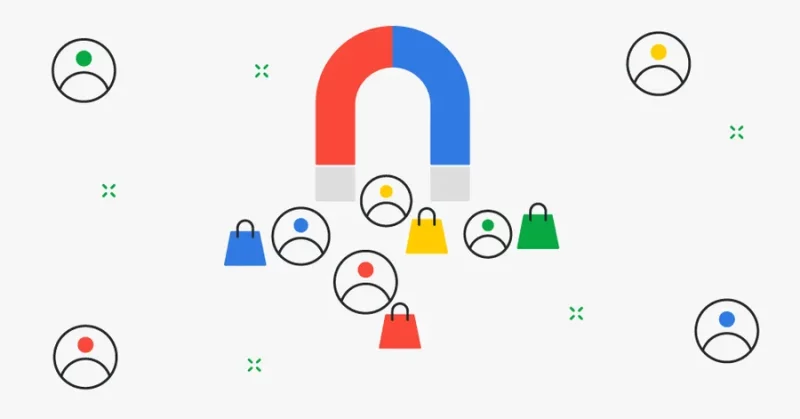
Stage 4: Loyalty Stage
In stage 3, if customers make the decision not to buy a business’s products, businesses can still provide useful information and content to them to improve brand recognition and increase customer likelihood. That customer will decide to buy the product the next time they have a need.
On the other hand, if a customer makes a decision to buy a product, the business needs to turn the customer into a loyal customer. To be able to retain customers longer, businesses can deploy effective customer service activities to bring positive customer experiences to them, thereby increasing customer satisfaction and turn them into loyal customers of the business.
Stage 5: Support (Advocacy Stage)
When a business can make customers happy, they will not only be loyal to the business but also show their support by recommending the business’s products/services to friends and acquaintances if they have any. needs or to people who are experiencing similar problems.
A business’s customers will introduce the benefits and effective features of the products/services that the business provides to others. With the introduction of a friend or relative, the business will certainly become more reputable in the eyes of customers than other options.
Read more : What is a Marketing Funnel & 3 steps to build an effective marketing funnel
As mentioned above, the 3 main types of leads will correspond to the stages of the Marketing funnel. If a customer is an Information Qualified Lead then that customer is in the awareness stage of the funnel. Besides, Marketing Qualified Lead will be customers in the middle stage of the funnel and Sales Qualified Lead will be customers in the final stage of the funnel.
Lead in marketing helps increase sales revenue
If you have a large number of potential customers, your business will be able to increase its sales revenue.
When more and more customers are interested in your business’s products/services, especially quality potential customers (Marketing Qualified Lead and Sales Qualified Lead), your business will be able to increase its conversion rate. and increase the ability to successfully convince customers to buy, thereby increasing sales revenue.
What is the way to evaluate the quality of leads in Marketing?
What do businesses need to do to evaluate the quality of leads in Marketing? What are the criteria for evaluating lead quality in Marketing?
Basically, businesses can use the following two ways.
Use the BANT model
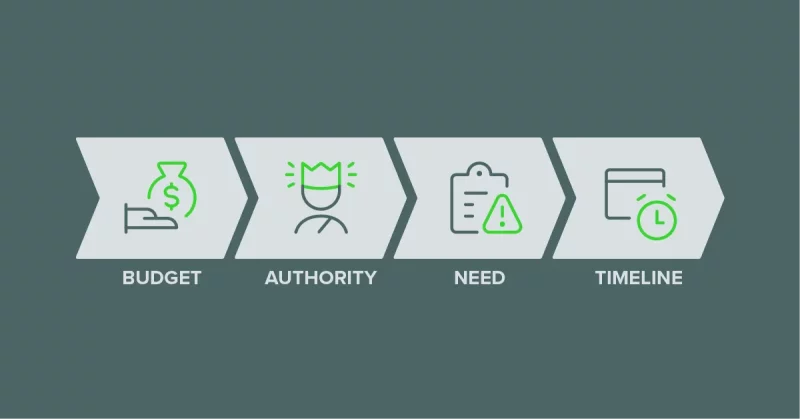
The first way that businesses can use is to classify leads using the BANT method (short for Budget, Authority, Need, Timescale).
For this method, businesses need to answer the following questions based on 4 main criteria: Budget, Authority, Need and Specific Time.
- Budget : Does the potential customer have enough budget to be able to purchase the product/service that the business offers?
- Authority : Can the potential customer make a purchasing decision or will the decision maker be someone else?
- Need – Do they actually have a need for the product or service? What kind of solution do they want to meet their needs?
- Timescale – Specific time : When do they intend to make the purchase? Is there a specific time period in mind when they plan to make the purchase?
A customer visiting a business’s website thanks to search engine optimization will not guarantee sales or high conversion rates. The more a business knows about the prospects of potential customers, the more effectively it will approach potential customers and not waste resources and costs on customers who do not really have needs. .
Lead Scoring

The second way that businesses can apply is lead scoring.
Not all leads are of the same quality, so marketing and sales staff need to find ways to sort lead types to find the most potential customers by lead scoring. .
Lead scoring is a quantitative way to evaluate potential customers. With this lead scoring technique, marketing leads are evaluated using a scoring system to determine where their interest level falls on the month from “interested” to “ready to buy.”
Lead scoring criteria are entirely determined by the business, but they must be consistent throughout the Marketing and sales processes so that everyone on the Marketing and Sales teams can work accurately.
If the lead has a higher score, that lead will have a higher chance of becoming a Sales Qualified Lead and the sales staff will establish a priority order for taking care of customers with high scores in the list of potential customers. your potential customers.
Some lead scoring criteria can be mentioned as:
- Level of customer interaction on social networks
- Level of customer interaction on the website
- Action to sign up for a trial / Sign up for a consultation
- Email open rate
- Demand
- Ability to pay for product package
However, when performing lead scoring, businesses may encounter some problems such as:
- Spend time measuring and scoring potential customers manually
- Having difficulty storing, classifying and filtering customer information according to many scoring criteria
- Customer behavior cannot be specifically measured to be able to score accurately
- Unable to build a specific customer scoring mechanism
To solve the above difficulties, businesses can use Marketing Automation software to save time, resources as well as manage information and score customers with the purpose of creating a list of customers. need to be given priority access and increase effective conversion rates.
4 ways to increase the number of leads in effective Marketing
Getting more leads is a problem that businesses are always concerned about and looking for ways to optimize. So what is the way to increase leads in Marketing?
Businesses can refer to the 4 ways below.
Method 1: Optimize appropriate CTAs
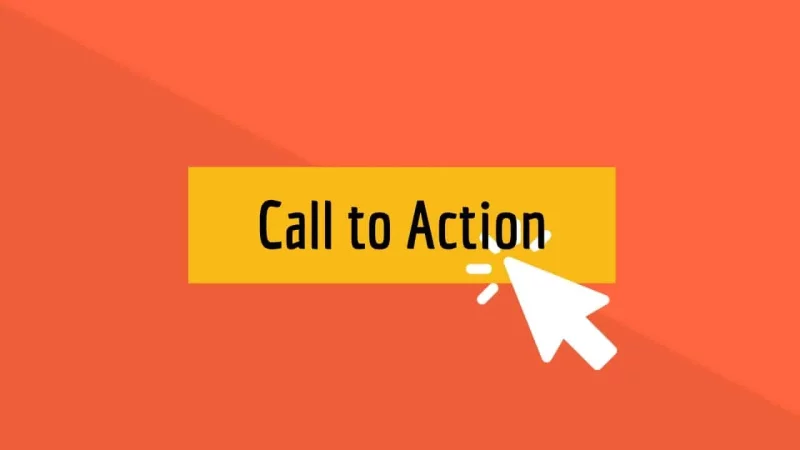
CTA (Call-to-action) is a call to the target audience (website visitors, Facebook post viewers, email recipients…) to perform some specific actions. Simply put, CTA is the next step that marketers want readers to take when they access the website, email, landing page, Facebook post… Calls to action are often expressed in the form of action verbs like “Register “, “Buy now”, “Receive newsletter”… button form, form filling, hyperlink…
A call to action can be any request the marketer wants the visitor to make. Therefore, CTAs can be of many types depending on the context.
For example, below are some calls to action you will often see on blogs (websites):
- Read more articles
- Sign up for the newsletter
- Share articles on social networks
B2B businesses often use calls to action such as:
- Try it for free
- Sign up for consultation
- Get demo
- Get a quote
Meanwhile, on e-commerce sites, CTAs often focus on commercial purposes, directing visitors to perform purchasing actions such as:
- Add to Basket
- Pay now
- Buy now
An effective CTA must clearly communicate what users can expect when they click the button or take the next action to help improve click-through rates.
CTA is like a “signpost” that helps visitors know what the next step should be or reminds them to follow the Marketer’s wishes.
If a website/post/email doesn’t have a clear and relevant CTA, the target audience may not know what to do next, what actions need to be completed to buy the product, or worst of all, they will leave. from the landing page without taking any action.
Therefore, CTA is a signpost that helps users go in the right direction the business wants, avoiding meaningless clicks. Effective CTAs will help guide visitors down the sales funnel, improve conversion rates across channels, and promote sales growth.
CTA is the part that helps create conversions, so Marketers need to have a strategy to build CTAs that create the desired effect. Contents that need attention to optimize CTA conversion rates include:
- CTA content
- CTA design
- CTA placement
- A/B testing
Read more details about how to optimize CTAs to increase lead conversion rates in the article: What is CTA (Call to action)? Instructions for optimizing CTAs to increase conversion rates for websites
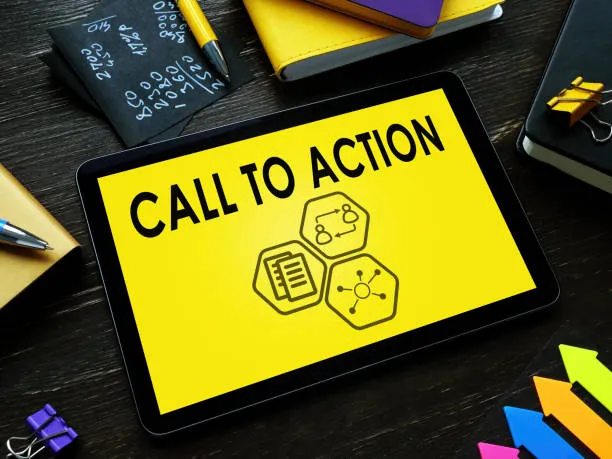
Method 2: Build SEO optimized content
Building SEO optimized content around topics that customers are interested in as well as in-depth articles about your business’s products/services is also an effective way to increase the number of leads.
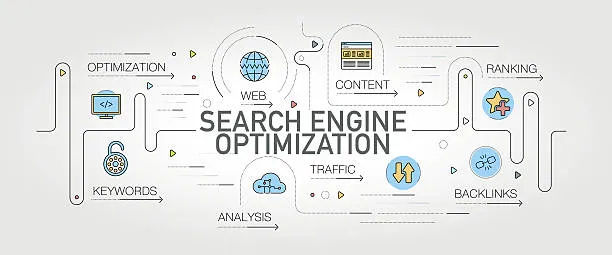
SEO is the abbreviation for Search Engine Optimization. SEO includes a set of actions and methods to improve the display ranking of a website on search engine results pages, thereby increasing organic traffic to the website.
Unlike PPC (appearing on search pages for a fee), the purpose of SEO is to bring the website to the highest search position on search engines naturally (without paying).
SEO is a highly effective and cost-effective digital marketing channel , but it takes a lot of time and effort for a website to display in top positions on search engines and bring in organic searches. for website.
When optimizing content to SEO standards, customers will be more likely to find useful articles from the business. If the content of a business’s article truly matches the customer’s search intent, they will sign up for emails to receive new articles in the future, or leave information to receive further advice on articles. related to the business’s products/services. Therefore, businesses should consider investing in SEO activities as a sustainable lead collection and nurturing campaign.
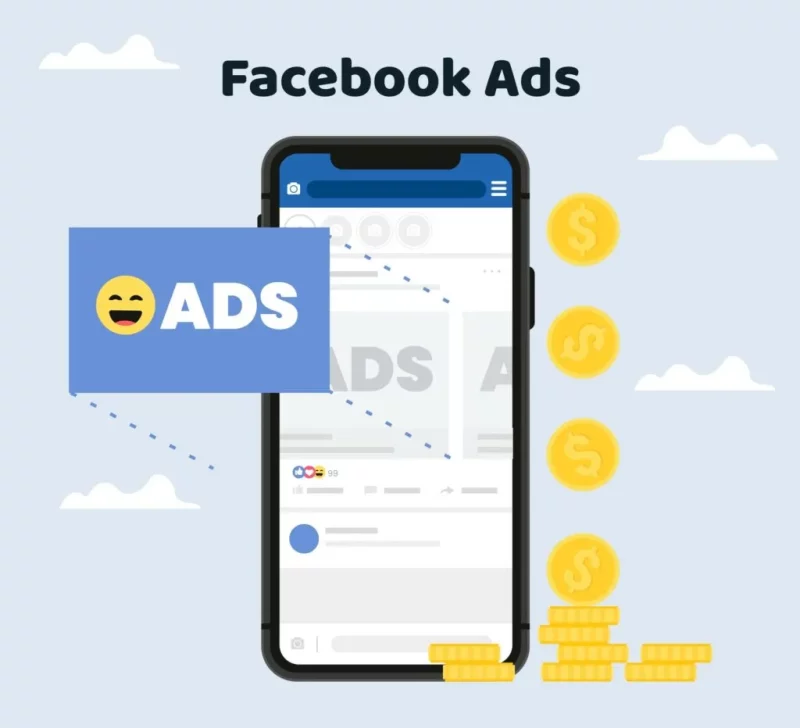
Another way to increase the number of leads is to promote social media marketing.
Today, in the 4.0 era with the development of the Internet and technology, marketers and marketing experts need to focus on implementing marketing campaigns through social networking platforms to reach customers. reach a large number of customers and optimize conversions.
Marketing via social networks, also known with the term “Social Media Marketing”, is a form of carrying out marketing and advertising activities on the Internet through the use of social network channels (Social Media) for the purpose of building Branding and promoting products or services.
With the strong connectivity of social networking channels – a place where a diverse group of customers come together to exchange, share, interact, exchange, discuss content, images…, implementing Currently, as well as implementing Marketing campaigns through these channels, it is gradually becoming a commonly used and developed form in the current digital age.
By taking advantage of the freeness of social networking platforms and the wide coverage with a large number of potential customers using social networks, businesses can easily advertise and implement activities. Marketing products and services through this media platform such as running Facebook Ads, building community groups, social campaigns… to effectively reach and attract potential customers, thereby increasing revenue. conversion rate and number of leads.
Read more about how to implement social media marketing in the article: [Instructions] 6 steps to implementing an effective Social Media Marketing strategy
Method 4: Build a conversion-optimized Landing Page
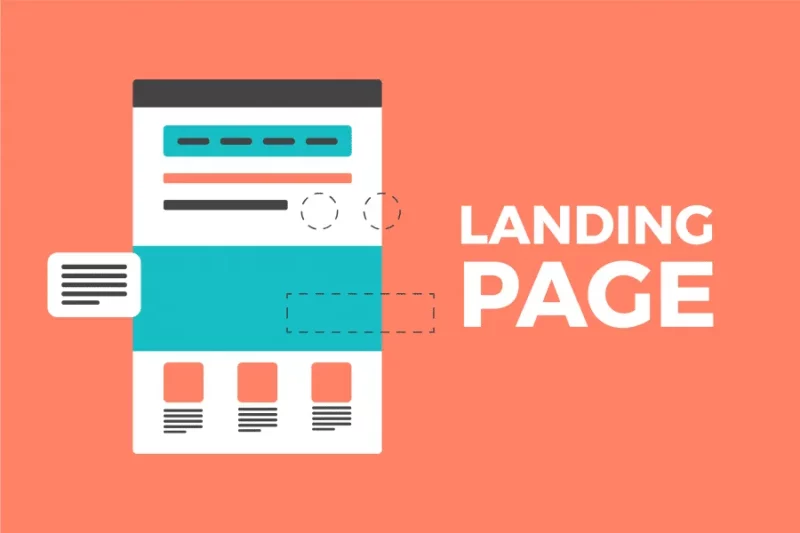
Landing pages are a popular and powerful tool for converting visitors into leads (potential customers).
Landing page (also known as landing page) is an independent website, created specifically for a marketing or advertising campaign with focused content to attract and lead readers to achieve a specific conversion goal. according to the wishes of the marketer.
Landing pages are often built towards a specific audience segment to focus on providing content that persuades that audience group to take a specific action or make a decision. In reality, that decision could be anything like making a purchase, downloading an Ebook, registering for an event, etc.
In short, landing pages are standalone web pages used to convert web traffic into leads (leads) and sales.
If you build a conversion-optimized Landing Page, your business can increase the likelihood that potential customers will perform a conversion action such as: signing up to receive news or registering for a business event, thereby Effectively increase the number of leads.
However, building a Landing Page that attracts customers and increases successful conversion rates is not a simple task. Many businesses often encounter difficulties in building a Landing Page such as:
- It takes time, effort, cost, etc. to build a Landing Page
- Depends on the code during the Landing Page construction process
- Landing Page design is not attractive
- Difficulty in dragging and dropping and editing Landing Page
- Cannot measure the effectiveness of Landing Page
Summary
Lead in Marketing plays an important role in helping businesses own more quality potential customers and increase sales revenue.
In this article, we have provided detailed information about leads in Marketing such as:
- What is Lead in Marketing?
- What is the role of leads in Marketing?
- What are the criteria for evaluating leads in Marketing?
- What are 4 ways to increase the number of leads in Marketing?
Hopefully through this article, you can grasp more information about leads in Marketing. Thank you!
Check out some other good articles:
- What is Market Research & 5 steps to conduct effective Marketing research
- Top 13 best Marketing books that Marketers MUST READ
- What are the 4cs in marketing & 4 steps to apply the 4C Marketing model effectively



